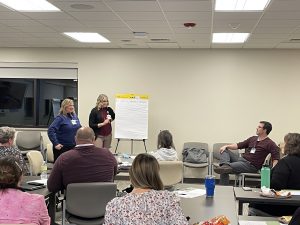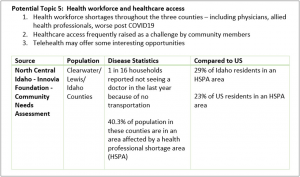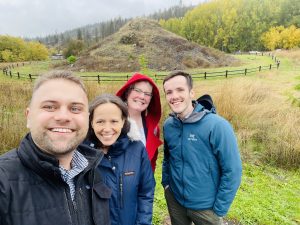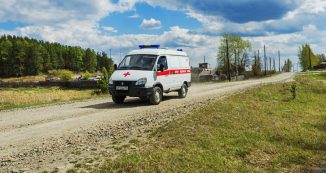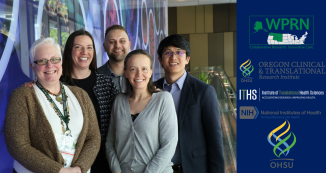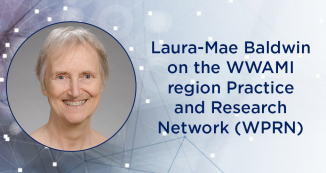
19 Apr Rural Health Lab: Bringing Rural Health to the Forefront of Translational Science
For the April installment of the ITHS Profile Series, we sat down with Dr. Allison Cole and Dr. Kelly McGrath to learn more about the new ITHS Community Engagement project, the Rural Health Lab. The Rural Health Lab, in partnership with the Institute of Translational Health (ITHS) and Kootenai Health, is co-led by Dr. Cole and Dr. McGrath to mitigate critical health disparities in rural communities. In collaboration with WPRN, Clearwater Valley Health, and St. Mary’s Health, the Rural Health Lab is a health initiative aims to identify and address the paramount health insecurities faced by rural communities.
What motivated the creation of the Rural Health Lab?
Allison: Our commitment to rural health was really the foundation of the Rural Health Lab. The long history of the WPRN working in community-based practices in rural communities really built the base for this health initiative. Laura-Mae Baldwin, the founder of WPRN, built and nurtured long-lasting relationships with rural communities in which the Rural Health Lab is now situated. There is a growing amount of literature and data that indicate how translational research does not often engage rural populations successfully.
The discoveries that come out of academic medical centers do not always benefit rural populations since there was no initial initiative taken to include these communities in medical research. On the other hand, current research methods may not always fit well within rural community-based settings.
Through our work with WPRN and Community Engagement, we have identified a specific need to prioritize rural health in translational research and we created the Rural Health Lab to address that gap.
Laura-Mae: The longstanding commitment that the ITHS has made to partnering with clinical practices through the WPRN has built the platform on which the Rural Health Lab could be built.
Kelly: Our goal is to develop and utilize the best evidence available to address the healthcare disparities faced by rural communities. By partnering with community leaders and creating the capacity for academic researchers and community leaders to collaborate in translational science, this effort seeks to prioritize the advancement of knowledge and research in this field. By combining rigorous research and practical application, we aim to improve the health outcomes of those living in rural areas.
What is your definition of a rural community, and how do you engage with its community members?
Allison: We normally use the federal definition to define rural communities. The U.S Department of Agriculture uses the Rural-Urban Continuum Codes to distinguish rural areas by the degree of urbanization and their adjacency to urban and metropolitan areas. The codes were created in 1974 and have been updated in each decennial since 1988.
Kelly: We employ a variety of methodologies to communicate with rural communities. The in-person meetings came first. We organized meeting sessions with community members and community leaders in an effort to learn more about their needs. The meetings are designed to hear from the community members and to build capacity for investigators and community leaders to connect. In addition, we looked at those who are absent and not properly represented in the discussions. Then we conducted surveys to reach those who were unable to share their input by attending the meetings.
How do you prioritize the healthcare needs within a rural community?
Kelly: Ultimately, health priorities are determined by rural community stakeholders. To define and prioritize health initiatives, we partner with community members by hosting community meetings and using surveys to gather and compile data to identify health priorities. Available data shows how things like obesity, alcoholism, deaths of despair, and healthcare access are disproportionately experienced within rural communities. For example, Clearwater and Lewis Counties in Idaho have higher rates of melanoma diagnosis and death from melanoma compared to the rest of the United States. Our data also show that local access to specialty healthcare may be limited. As of now, health insecurities are overwhelmingly centered around healthcare access. In one of our community surveys, nearly 95% of respondents marked healthcare access as either “very important” or “important” within their communities.
How do you assess the impact of the Rural Health Lab?
Allison: Part of our work is to select measures that reflect the work that we are doing in a concrete way. Evaluating the positive and negative impact is crucial to our work since it will provide further guidance on how to move forward. Our goal is to create ways of measuring impact that can be understood by those who are not part of the Rural Health Lab. We will be using standard validated measures for healthcare access such as measures reported in the CDC’s Behavioral Risk Factor Surveillance study. By using those measures, we can compare the baseline with the outcomes over time and hopefully demonstrate the impact of the Rural Health Lab.
How does ITHS support the endeavor to mitigate the health disparities faced by rural communities?
Allison: The Rural Health Lab was founded and based on the incredible work done by the ITHS WWAMI region Practice and Research Network (WPRN). The WPRN is a practice-based research network spanning 34 organizations over the five-state WWAMI region focused on community health. The lab is taking this initiative one step further by solely focusing on the well-being of patients in rural communities.
Through this collaborative effort, ITHS is prioritizing the reduction of health disparities across the region.
Looking ahead, what are the plans for the lab?
Allison: Our next step here is really to select and support community-driven projects that address their health priorities. We are working with our community partners to help identify one or more teams or community partners that could lead a project locally to address healthcare access. We are also meeting with investigators who can develop and test interventions that impact healthcare access. The goal is to have parallel streams of community-led projects and investigator-led projects that are synergistically working to improve healthcare access in the community.
Kelly: It will be very exciting to see where this goes over the next couple of years, and I am interested to see the impact on our community. My hope is that five years from now, we will be able to look at tangible positive outcomes and know that we made people’s lives better.
All photos courtesy of the Rural Health Lab. Interview by Mihila Gomes. If you have a story suggestion for the ITHS Interview Profile series, please send your ideas to Lisa Stromme Warren.





